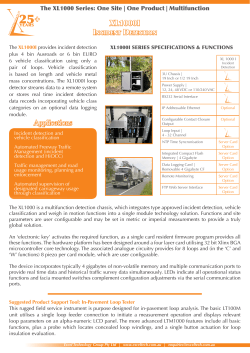
EMDR Dialogue-Protocol Worksheet Phase 3
EMDR Dialogue-Protocol Worksheet Phase 3 Hanna Egli-Bernd Dipl.Psych. (2007) Preliminary note of Th: „Let us presume, that in this moment, two parts of you are present. The person that you are today, and the affected self, who went through the experience earlier in your life. Both will share the work, that we do today“. ___________________________________ 1. Issue/The Memory/Symptom: 2. Picture: For now, I would like the affected (younger) part of you to tell us, what was the worst moment/ part of the incident...“ „Which image belongs to that moment“: VOC Th: “And now, I’d like the younger part to decide, how true and plausible the words, you just heard, feel to you now, when you think of the image and of the words you said about yourself…. 1 means : I do not believe her/him at all, is false 7 means : I do believe her/him fully, is true 1 2 3 4 7 SUD “How upsetting / disturbing do you find these feelings (right now). 1 means not distressing at all, 10 means extremely distressing”. 1 2 3 4 5 6 No distress “When you bring up that image, what negative thought or belief do you have about yourself now? Or what words go best with that incident that express your negative belief about yourself now? (A statement in present tense)”. 6 100% completely true 5. Affect: “Now can the younger / affected part tell, what feelings are there, when you think of the image.. and those words…”: 0 3. NC Negative Cognition: 5 Completely false, not true 7 8 9 10 extremely distressing 6. Localization in Body “And where in the body do you both feel this now?” Space for notetaking on back ==================================== 7. PC Installation: Th: Could the affected part listen now for a moment, what kind of answer / alternative thought about the situation and yourself the adult part will say from her/his perspective”. Do the words (positive cognition) still fit, or is there another positive statement you feel would be more suitable? Think of the original incident and those words (positive cognition). From 1 (completely false) to 7 (completely true), how true do they feel right now? Think of the incident and hold it together with those words (repeat positive cognition). 4. PC Positive Cognition: Th: “And now, can you, the person that you are today please formulate an evaluation, alternative view, thought, opinion about the experience and your younger (affected) self from your perspective of today. Ideally, use formulations in direct speech “you are…you have.” Th: „good, now I’d like the adult part to stay present and listen to what the younger part will say“ 8. Body Scan: "Close your eyes: concentrate on the incident and the words (repeat positive cognition) and mentally scan your body. Tell me if you feel anything." If any sensation is reported, do Ems until disturbance subsides If a positive/comfortable sensation reported, do set of EMs Notetaking Phase 4 Therapist Client
© Copyright 2025





















